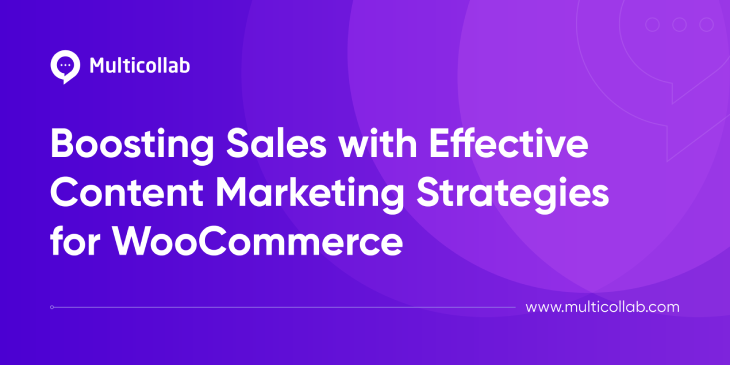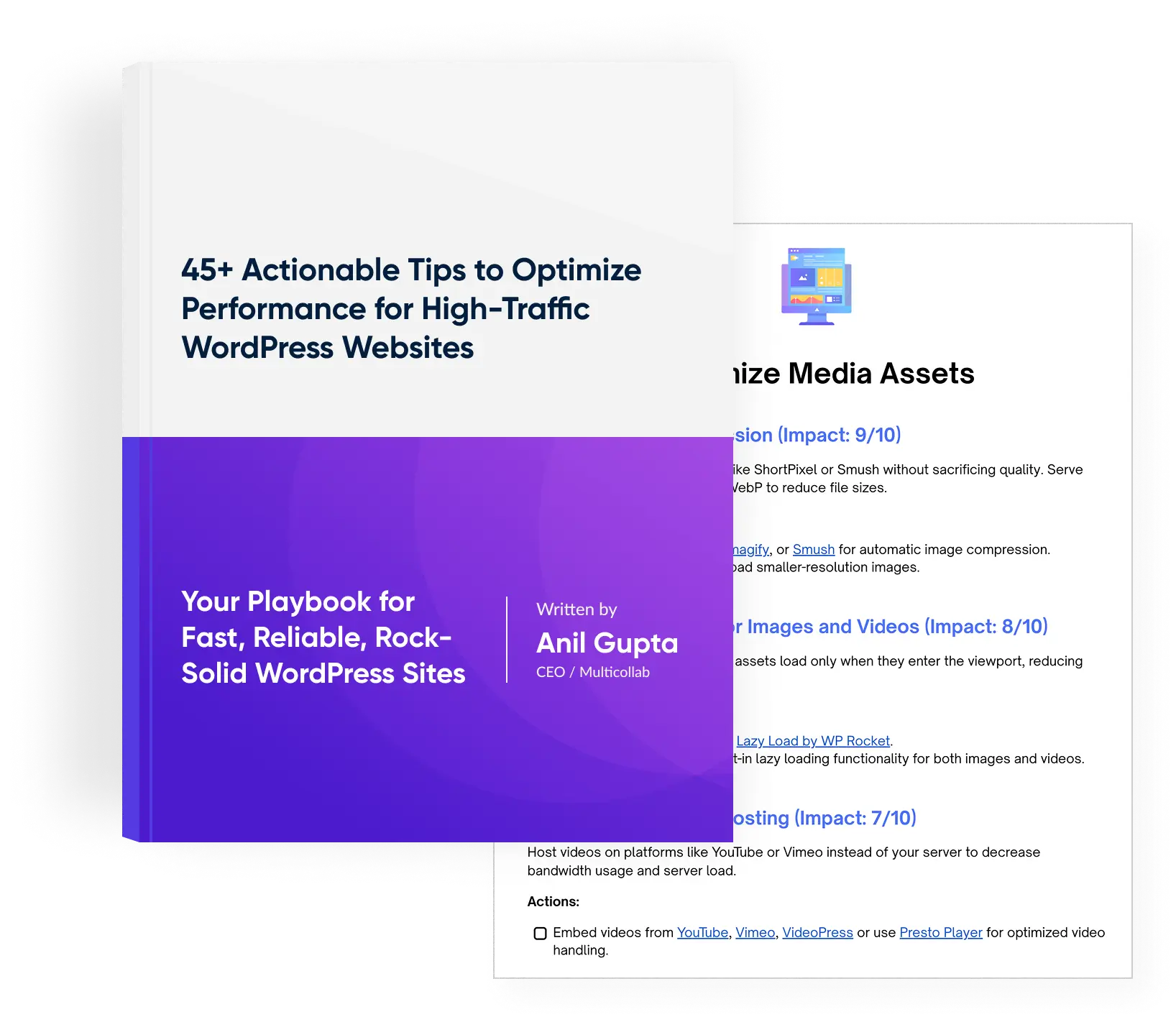Table of Contents
Mastering the art of content marketing is crucial for boosting sales and ensuring the success of your WooCommerce store. WooCommerce, a popular and versatile plugin for WordPress, enables businesses to create a robust online presence and cater to diverse industries.
This article aims to unravel effective content marketing strategies specifically tailored for WordPress sites using WooCommerce, ensuring a seamless integration of pivotal aspects such as multilingual website functionality, strategic use of SEO plugins, understanding user roles, and employing activity logging for insightful change reporting. By the end of this guide, you will be equipped with practical knowledge and strategies to enhance your content marketing efforts, drive traffic, and, ultimately, increase sales on your WooCommerce platform.
The Role of WordPress in Content Marketing
WordPress, originally a user-friendly blogging platform, has evolved into a robust content management system (CMS), powering over 40% of the web. Its flexibility and ease of use have made it the go-to choice for businesses, bloggers, and creative professionals aiming to establish a strong online presence. In the realm of content marketing, WordPress serves as a versatile canvas, offering endless possibilities to craft and disseminate stories that resonate.
WordPress’s extensive library of plugins enables users to add functionality, optimize content, and enhance user experience, all of which are crucial for a successful content marketing strategy. For those operating online stores, WooCommerce is the go-to extension for your WordPress site.
Boosting eCommerce Sales with WooCommerce
Leveraging WooCommerce on your WordPress site opens up a realm of possibilities for enhancing your e-commerce strategy through content marketing. As a powerful tool used by millions of online stores, WooCommerce allows for seamless product integration, enabling you to showcase your products effectively.
In addition to engaging product descriptions and high-quality images, embracing diverse content formats like webinars and podcasts can significantly enrich your marketing approach. Hosting webinars provides an interactive platform for product demonstrations and customer Q&As, while podcasts offer a unique avenue to discuss product benefits and industry trends, deepening audience engagement. Employing blog posts and articles to share customer stories, product usage guides, and other relevant content adds further value.
This holistic approach ensures that every piece of content, from written articles to webinars and podcasts, works in tandem to create a compelling narrative around your products and brand. Enhancing your store’s user experience by organizing products into intuitive categories and offering personalized recommendations ensures that customers can easily find and relate to your products. Furthermore, integrating SEO practices directly into your product pages with WooCommerce enhances visibility, attracting a broader audience to your store.
Expanding Reach with Multilingual Content
In today’s global marketplace, catering to a diverse audience is paramount, and this is where multilingual content becomes a game-changer. By translating your site’s content, including your WooCommerce product listings and descriptions, you open doors to non-English speaking markets, significantly expanding your reach and potential customer base. For example, if you’re setting up a WooCommerce-powered restaurant system that caters to a diverse customer base, you may want to translate your content to ensure that your menu, restaurant bookings, and delivery services are accessible and appealing to a global clientele.
Start by identifying your target demographics and their preferred languages. Tools and plugins are available that seamlessly integrate with WordPress, aiding in the translation process and ensuring that your content maintains its original tone and context in different languages. It’s crucial to consider not just literal translations but also cultural nuances to resonate with local audiences.
Incorporating multilingual SEO practices is equally important. This entails optimizing your content, meta tags, and URLs for each language to ensure that your products and content are easily discoverable on search engines across different regions. A multilingual site not only broadens your audience but also enhances user experience, as visitors can navigate and interact with your content in their preferred language.
Enhancing Visibility through SEO Optimization
Your content’s ability to rank high on search engines directly influences traffic flow and potential sales. WordPress, with its SEO-friendly structure, sets the foundation for strong search engine performance, and the strategic use of SEO plugins can elevate your site’s visibility even further.
Start by identifying and integrating reputable SEO plugins that align with your WordPress site. These plugins provide a user-friendly interface to optimize each aspect of your content, from meta tags and image alt texts to sitemaps and link structures. The key is consistency and relevance; ensure that your chosen keywords are naturally integrated into your content, titles, and headings.
Beyond on-page SEO, focus on building a robust backlink profile. Quality backlinks from reputable sites enhance your site’s authority, contributing to higher search rankings. Additionally, ensure that your website is mobile-optimized, as Google prioritizes mobile-friendly sites in its rankings.
For WooCommerce users, SEO practices extend to product listings. Optimize your product titles, descriptions, and images to ensure that they are search engine friendly. Utilize customer reviews and ratings, as these add credibility and can contribute to improved product visibility.
Optimizing Content Marketing with User Roles
WordPress and WooCommerce offer a powerful feature in user role management, allowing for granular control over who can access and modify various parts of your site. This becomes especially crucial in content marketing, where collaboration among various team members is key to creating and maintaining high-quality content.
Defining User Roles: Start by assigning specific user roles such as Administrator, Editor, Author, Contributor, or Subscriber in WordPress, and additional roles like Shop Manager or Customer in WooCommerce. This ensures that each team member has access only to the areas necessary for their specific tasks, enhancing security and maintaining content integrity.
Collaborative Content Creation: With clear user roles, content creators, editors, administrators, and other team members can collaborate effectively. Writers and contributors can focus on creating content, while editors ensure that the content aligns with the overall marketing strategy and brand voice.
Streamlining Workflow: Utilize user roles to streamline your content creation workflow. Set up a system where contributors create content, editors review and approve, and administrators handle the publishing. This not only speeds up the content production process but also ensures that each piece of content is vetted and optimized before going live.
By effectively managing user roles, you create a secure and efficient environment for content creation and optimization. This enhances collaboration and workflow efficiency, which ultimately contributes to the success and growth of your WooCommerce store.
Tracking and Refining Strategies with Activity Logging
Maintaining a clear and comprehensive record of all changes and updates is crucial for both accountability and continuous improvement. Activity logging on your WordPress site plays a pivotal role in this process, offering a transparent view of all user actions and content modifications. This functionality not only enhances the security of your digital content but also serves as a valuable tool in refining your content marketing strategies and ensuring they consistently align with your business objectives and audience expectations.
Here are some of the reasons you should consider tracking changes to your content:
Activity Logging for Accountability and Improvement: Implementing activity logging on your WordPress site can provide invaluable insights into user actions and content changes. This transparency ensures accountability, as every change made to content is tracked and logged.
Analyzing Content Performance: Use activity logs to analyze which content types and topics are most frequently updated or revised, indicating areas that may need more attention or a different approach. This data-driven approach aids in refining your content marketing strategy, ensuring that your efforts are aligned with audience needs and preferences.
Enhancing Security and Troubleshooting: In addition to improving content strategies, activity logs serve as a security measure and troubleshooting tool. Any unauthorized changes or errors can be quickly identified and rectified, ensuring that your content remains secure and accurate.
Leveraging activity logging on your WordPress site transforms the way you manage, analyze, and optimize your content marketing efforts. By maintaining a meticulous record of all changes and user actions, you ensure accountability, enhance security, and gain valuable insights for continuous improvement. This proactive approach to content management and strategy refinement not only safeguards your content but also propels your WooCommerce store towards greater success, ensuring that your marketing efforts are as effective and impactful as possible.
Wrapping Up: Unleashing the Power of Content Marketing on WooCommerce
As we’ve explored throughout this article, wielding the power of content marketing in conjunction with WooCommerce on your WordPress site can significantly boost your sales and enhance your online presence. By tapping into the diverse functionalities of WordPress and the robust features of WooCommerce, you are poised to create a seamless and engaging user experience, propelling your store to new heights.
Remember, the journey doesn’t stop here. The digital landscape is ever-evolving, and staying ahead requires continuous learning and adaptation. Keep experimenting with different content strategies, monitor the performance, and adjust your tactics based on what resonates with your audience and drives results. From expanding your reach with multilingual content to optimizing your site with SEO best practices, every step you take is an investment in your store’s future.







